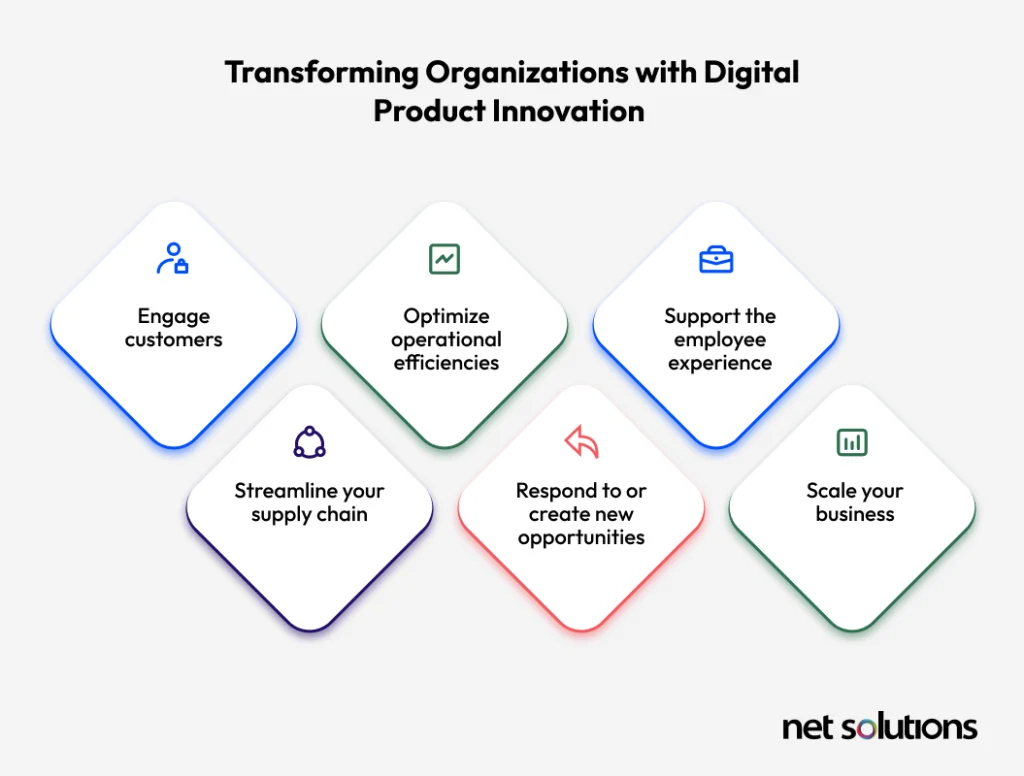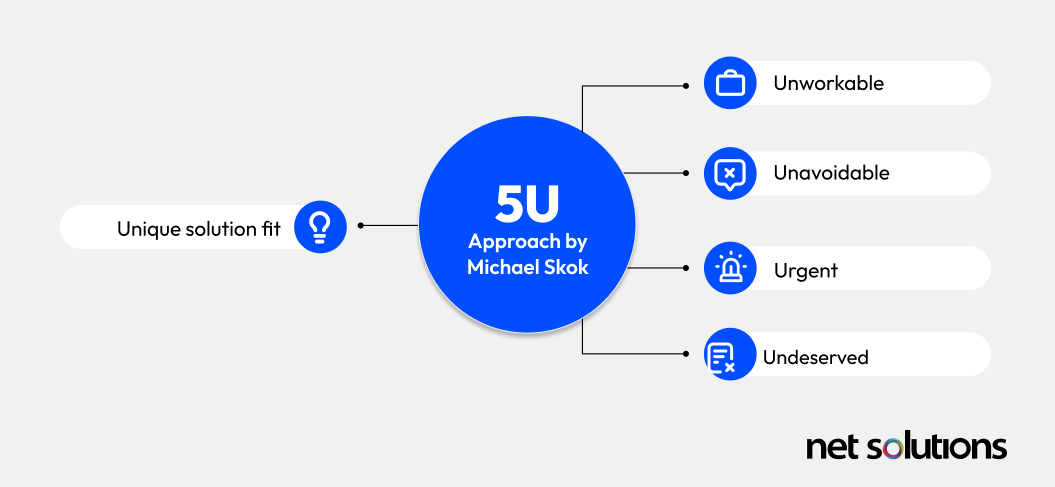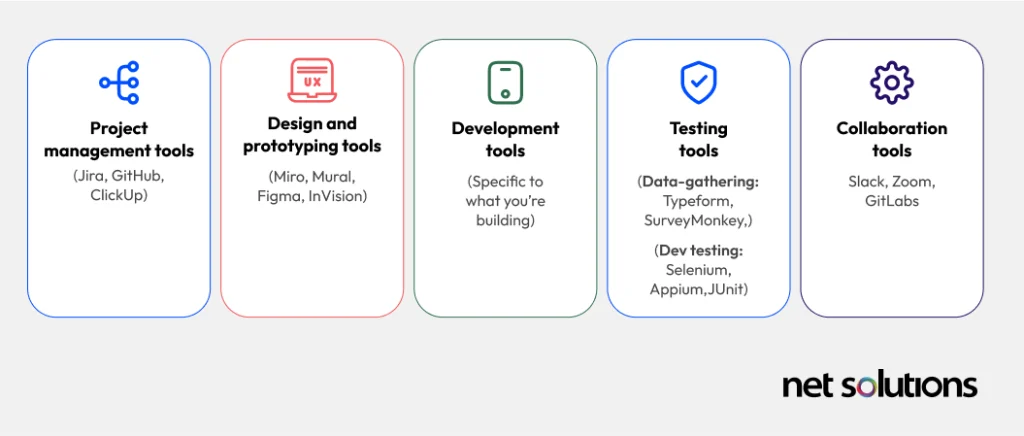Product development is central to business success, with new products expected to make up one third of sales and over $30 trillion in revenue within the next five years.*
While product development is a top strategic priority, organizations face challenges in successfully executing on innovation. Geopolitical and economic uncertainty, high labor shortages, and high attrition from unengaged employees have each become persistent barriers to digital product innovation. In fact, if left unchecked, these barriers not only impact innovation performance, but can have a negative impact on revenue and business continuity.
Rather than accept the status quo, leading organizations are leaning into strategic initiatives with the help of experienced agencies—reducing pressure on employee workload, freeing up time for innovation, and gaining the benefit of a flexible talent pool to help accelerate time to market.
In this post, we’ll talk about how you too can “hack” your digital product development processes to incubate innovation.
Transforming Organizations with Digital Product Innovation
Regardless of your industry or size, remaining competitive requires you think about how you can harness technology to its fullest potential. Digital product development is one of the key pillars in transformation efforts to change how your business operates or delivers value to your customers. A digital product can help you:

How to Optimize Your Digital Product Development
Led by an understanding of the market, your customers, and new technologies, you have an idea for a product you think can transform and scale your business. But developing a new product can take hundreds of hours, from ideation and concept testing to product development and deployment. So, how do you take your new product idea from concept to reality—and how do you ensure your path to release does not stall along the way?
In this section, we’ll walk you through what you should consider in your digital product development process and how a partnership with Net Solutions—our global expertise in design and technology and proven methods of acceleration—can help hack your product development process to help you see results in record time.
1. It All Starts With An Idea
Having an idea is only the first step, but it’s an important step. But you need to know if it hits the mark—is it good or is it great—and then take steps to quickly build that product before the market shifts and the opportunity is lost.
That’s where our agency experience kicks in. Our business analysts can work with you to conduct market and user research and make sure your idea is meeting a defined problem—a problem that is urgent, underserved, unavoidable or unworkable (the 4U’s) and that your solution is unique in meeting that defined problem—the critical 5th U of product development.

Staying on top of the latest trends is one of the ways you can support the 5U’s. We’re working directly with clients to advance products, for both internal and external application, taking advantage of innovations in:
- Predictive analysis and other big data applications
- Personalization and other user-centric initiatives
- Generative AI and autonomous or “agentic” AI
- AR/VR
- Authentication and data security, including advancements in passkeys and identity proofing to address issues such as deepfakes and AI phishing
Curious about the latest technologies and how they could apply to your business goals? Our experts can sit down with you, learn about your business, and help you identify product ideas and/or amplify your tech stack to provide more data-driven insights to support your product innovation capabilities.
2. Don’t Build the Wrong Idea (aka Concept Testing)
42% of failures can be attributed to a lack of market need. Another 17% fail from a lack of robust testing. – Entrepreneur
Companies that have processes in place to channel ideas through evaluation are in the optimal position to help execute on the best of ideas in record time. To do this, you need to engage in supporting your product-centric mindset with innovative capabilities—tools and strategic partners—to help move ideas through the pipeline:
- Prototype it. The fastest way to test an idea is to build out a prototype with minimum functionality to get to testing. You’ll later build this into an MVP (minimum viable product), but we would rather see product-centric organizations move more ideas to prototype and only the best ideas to MVP. Why? Testing.
- Validate it. There is no point to a prototype without testing for internal and/or external feedback. Ultimately, we’re looking at the gain/pain ratio: does the benefit of the product outweigh the effort to use the product? What features really matter? If it’s an external product, what are people willing to pay for it?
- Approve it. Establish criteria that determine the value of moving a product to the next stage of development. Beyond that gain/pain ratio, you might look at the cost or time to build, uniqueness, relevance to the business, potential scalability, anticipated performance metrics, etc.
- Support it. Rather than chasing a budget, have an ongoing line item to accelerate moving into the next stage of product development. For small companies, it’s also critical to have a central decision maker who is on board with innovation and can act quickly. As companies grow, defining the stakeholders who approve each stage of development can help keep projects on time.
If you get here quickly, you’re doing things right.
Strategic partnerships can make a critical difference in the speed of your project development, helping you establish what should be in the prototype, getting that testing done (and done well), and using that feedback to validate and refine the product idea and the features you want to build.
Building the Great Idea… Before the Market Changes
Getting that idea from prototype to MVP is critical to capturing opportunities—before the market changes or your competitors swoop in. But the world is not static while this all happens, so building that idea should always include pauses to gather feedback and refine. If you’re in the development world, this is what we call Agile development—building a little bit, gathering feedback, refining, building more, and onward in a loop.
Sounds simple, but it can be hard to do. Companies large and small struggle with the same thing—focus. Development teams (assuming you have the right people for the job) often wear lots of hats and get pulled in many different directions. Without dedicated resources or the right experience, project timelines slip or projects don’t deliver.
DON’T assume you have to do it all yourself. Leading companies accelerate ideas to market with the help of strategic partnerships.
Leading startups, small businesses and even large organizations are infusing strategic partnerships into their product development lifecycle to bring on flexible expertise when and where it’s needed. Our biggest clients have stayed with us for years and that’s because we’ve created an environment of collaborative innovation that continues to incubate, test, and execute on ideas to capture the market, drive growth, and support the bottom line.
Tools Used in Digital Product Development

The best tools for digital product development are those that help your team work most effectively. Ok, we know, that’s not very clear. But every tech stack is different. However, since we work with a lot of clients around the world, we know what makes our teams and our distributed processes work.
- Project management tools: Jira, GitHub, ClickUp
- Design and prototyping tools: These will depend on the project, but we like Miro, Mural, Figma, and InVision. We’ve also done some work with various “no code” tools to spin up prototypes in record time.
- Development tools: These are highly specific to what you’re building, so we’ll just say: ask us once you know what you want to build!
- Testing tools: These fall into two categories:
- Initial data-gathering: Typeform, SurveyMonkey
- Development testing: Selenium, Appium, JUnit
- Collaboration tools: Slack, Zoom, GitLab
Best Practices for Ensuring Product Scalability
Can we say “Work with an experienced partner”? Designing for scalability is often a matter of experience, knowing what infrastructure to set up and how to build scalability into the initial design of the product.
- Invest in infrastructure that can scale automatically and with a history of strong performance metrics
- Distribute that workload, investing in things such as edge caching and CDNs
- Incorporate testing into every stage of development
- Continually seek out indicators that scaling is an issue – whether that’s performance degradation or a lack of storage capacity or slow third-party elements or even negative feedback
We could go on, but it really depends on your project.
What Are Common Mistakes to Avoid in Product Development?
We all know the adage to “not put the cart before the horse,” and the same is true within product development. Ideas can grab hold of us and blind us to reality, making us less likely to seek out validation or to listen to negative feedback and to only listen to voices that amplify our own. This kind of bias, be it innovator bias or confirmation bias, is a common source of destruction to any new project, leading to projects being created that are not a good fit or products being funded and built without due diligence.
There are many reasons to build a new product, but we can’t wish a project into success—we need to plan for success.
Ready to Start Your Project?
If you are ready to explore how new technology could fuel new ideas for your company, want to vet an idea against an experienced sounding board (ok, and also do all that user testing we talked about), or are ready to amplify and accelerate your innovation with the help of a strategic partner, we can help.
Net Solutions has over 20+ years of experience working to amplify the ideas of our clients. Once we work on one idea, we tend to stick around (often for a long time). Why? Because our success speaks for itself.
Want to learn more about how we can support your product development?
Frequently Asked Questions (FAQs)
1. What is Digital Product Development?
Digital product development is the process of ideating, designing and developing digital products to enhance the customer or employee experience, support operational efficiency, improve business insights or support organizational agility.
Digital Product Development vs. Product Design: What’s the Difference?
Product design refers to the process of turning an idea into a conceptual new product, either physical or digital products—but not producing or developing it for use or release. In contrast, digital product development encompasses the entire process of creating a digital product (only) from ideation to its eventual development, release, and use.
What are common methodologies for digital product development?
To get digital products to market quickly, most organizations and specialized agencies (like ours) use methods such as Agile, though you may also hear terms such as Scrum and Kanban.
What are the challenges in product development?
The top challenges in developing new digital products are building the right product and building the product right. Sounds easy, hard to do. A lot of problems come down to not vetting ideas, not testing ideas, and then struggling with the build, be that cost overruns, scalability issues, complexity, or security oversights. Most experienced agencies will be able to avoid all these common issues.
How do you prioritize features during development?
The most important features of your product are those that specifically solve the problem you’re going after, which you know from your understanding of your business and your market. The best (and really only) way to know what ‘bonus’ features to build out is through feedback from internal and/or external stakeholders. We gather this through prototyping and MVP creation, but we know what features to build by asking users what they most need or want.
What is the role of data analytics in digital product development?
Did we mention how important feedback is? Data analytics is one way that you gather incremental feedback that identifies what’s working and what you need to improve upon.
How do you ensure compliance with legal and regulatory standards?
The regulatory landscape is always shifting with regards to software products, particularly if your client starts with a capital F for Federal. Just this week a new EO rolled out to hold software and CSPs accountable to new standards of development. Secure development and secure products need to be central right from prototype (when it’s less expensive to think about). The top three considerations are: what data you collect / how you collect it / where you store it, how you secure development (or code you use), and how you lock everything down (authentication), for you and for users.



